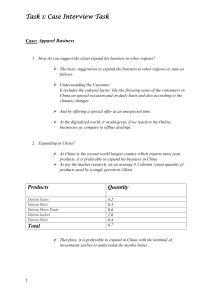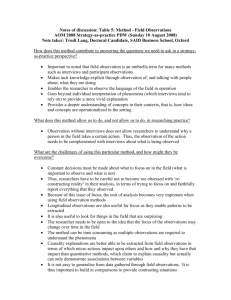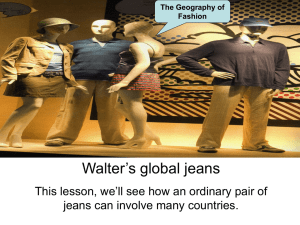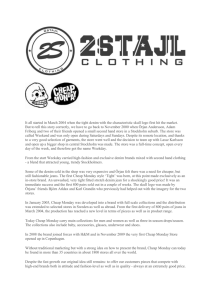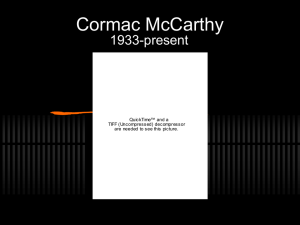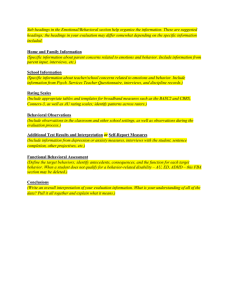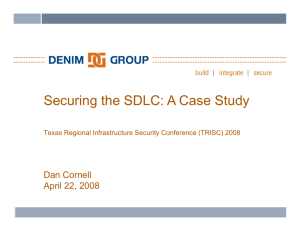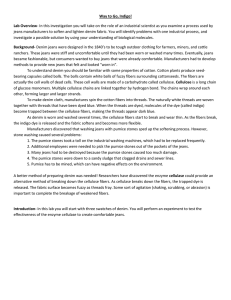What is material culture?
advertisement
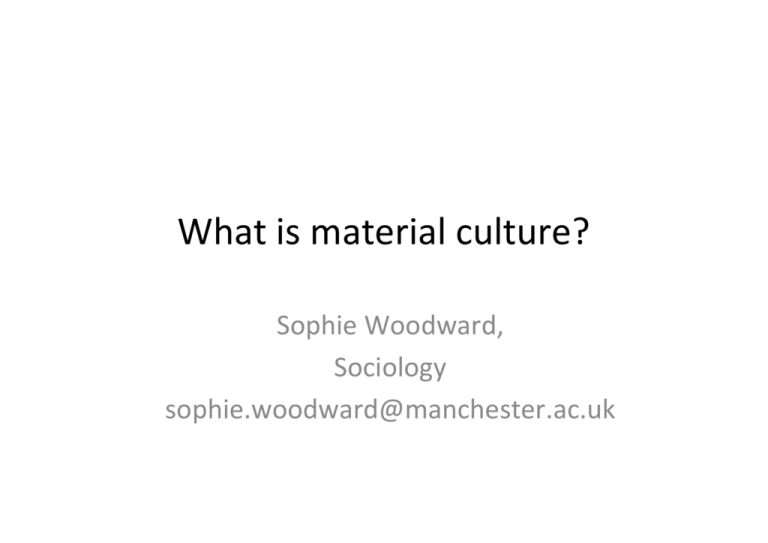
What is material culture? Sophie Woodward, Sociology sophie.woodward@manchester.ac.uk What is material culture? • Objects are not inert • They are invested with meanings, through association, usage. • These meanings change/grow over time. • The lives of people and the lives of things cannot be separated. Challenges of the approach: • What methods can be used to understand materiality and material objects? • The limitations of word based qualitative methods. • Multiple methods, no easy ‘answers’. Material Culture – background. •1st used in OED (1843) regarding the ‘material civilisation’ of Mexico •Linked to rise of anthropology •Cross‐cultural artifacts are displayed. Victorian cabinets of curiosities The unusual, ‘other’, un‐systematised Great exposition, Crystal Palace 1851 • All of humanity’s technical achievements, systematised. • Aboriginal spears, 19th century GB industrial achievements • Evolutionist. Haddon and Pitt‐rivers (below) Systematised, as ‘evidence’ of other cultures. With rise of monograph, reified version of culture, less about objects (left to archaeology) Current material culture studies • 70s (Bourdieu) – taste. • 80s consumption studies; importance of things. Everyday. • More recent shift in the social sciences towards understanding practice, and accessing the ‘non‐ verbal’. 1.Objects have agency (are not passive, do not just reflect meaning) 2.Agency of people/things linked. Why use it? Some possible reasons (there are many more!): •An interest in the relationship people have to objects •Interest in practice, the sensory, emotional. •Allows you to understand the non‐verbalised, the embodied. •Route into understanding wide range of questions such as: memory, relationships to others, biography, social change etc. 1. Object‐based interviews Carrying out interviews around an object. Asking people to ‘tell me about’. Why use them? •Even if your focus is not materiality, this can allow you to use objects to understand memory or relationships to others. •Use objects to get people to ‘tell their story’ •Anchor narratives. Examples • Janet Hoskins (1998): how objects may be biographical. Betel bag (Kodi of Eastern Indonesia). Carried by adults all the time, alternative to verbal ‘story telling’. • Woodward (2007) – women’s wardrobes in the UK. How items of clothing may be biographical (‘former’ aspects of the self). 2. Ethnographic methods Observation, participation, context, situated. Comfort of Things (Daniel Miller). Ethnography in London of people and their possessions in their homes and what they tell you about their lives. Observing how people interact with these in practice. Seeing what story the objects tell. 3. Interdisciplinary approaches • Collaboration with materials ‘experts’. • Social science and science methods in dialogue together. OR Are these methods too different in their approaches? • E.g. of engineering, design, material specialists. The 3 methods adopted were: 1. Interviews (life histories and object based interviews with ‘old jeans’ 2. Textile testing for e.g. on characterizing yarn and weave and testing fabric tensile strength and abrasion resistance 3. Design as a method i.e. reconstituting jeans through old garments Where to get more info • Global denim project: http://www.ucl.ac.uk/global‐denim‐ project/ A collaboration of over 20 academics all working on material culture approaches to denim • Material World Blog: http://www.materialworldblog.com/ A useful source of information about a range of different material culture events/ research. • Key References Journal of Material Culture http://mcu.sagepub.com/content/current

